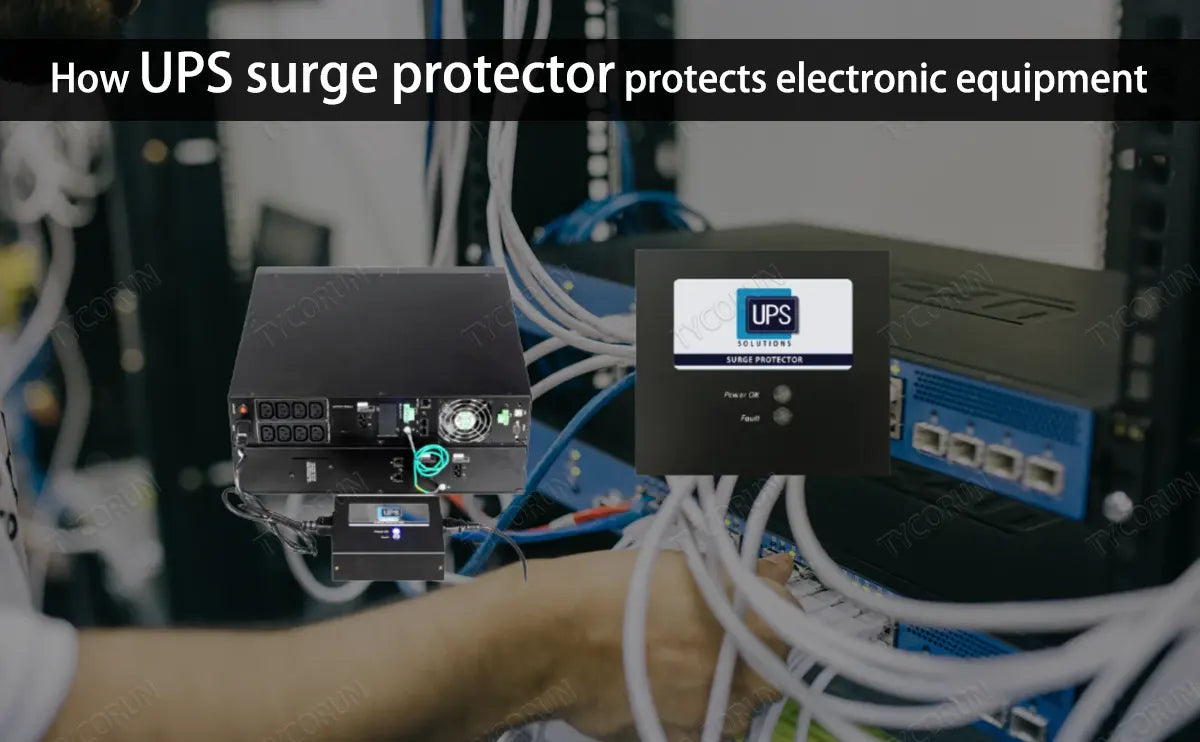
Main content:
A power surge occurs when the flow of energy into and through the house increases. Small power surges can occur when high-powered equipment, such as refrigerators, microwave ovens, or air conditioners, turn on or off and interfere with an otherwise steady flow of current. This can also happen if a nearby transformer or transmission line fails, or if a fault occurs during a grid switchover.
While many surges are small and have little to no impact, some can be extremely devastating. When lightning strikes near the power line, energy can increase the current flowing into and through your home by millions of volts. Hurricanes damage a city's power grid by damaging power lines and high-voltage transmission lines that carry power to your home. What is UPS surge protector?
1. What is a surge
In addition to power outages, there are many power supply problems you face. In fact, in addition to power interruptions caused by tripping, grid failures, and power grid power failures, there are still many power supply problems faced by computers and peripherals.
A common power supply problem is surge. A brief but intense spike in current, usually caused by lightning. Surges can damage and destroy electronics, and high current spikes or voltage and current spikes can damage boards and components.
A power surge is an intense, short-lived rise in voltage that travels through wires or other cables that transmit data or energy, such as telephone lines and coaxial cables for television reception. Common causes of surges include:
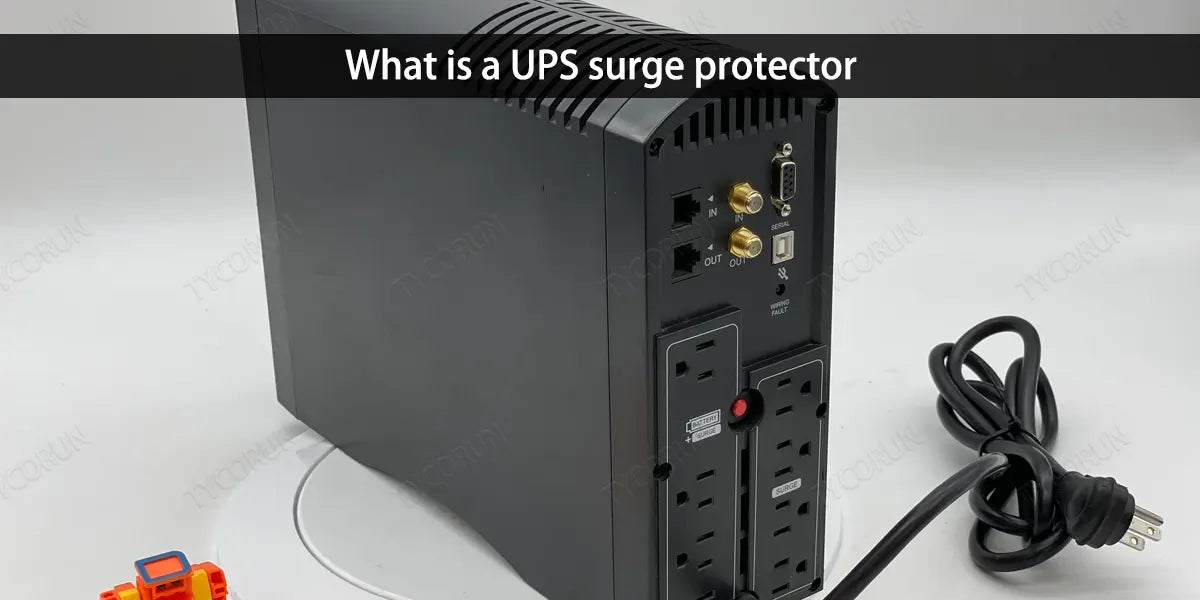
- Lightning strike.
- Power outage and power cord disconnection.
- The circuit breaker tripped.
- On/off cycles for large appliances and tools.
- Accidents and failures on the utility or grid.
2. What is a UPS surge protector
UPS is the abbreviation for "uninterruptible power supply." The most basic UPS is a battery-powered backup power system. It's like power conversion system. UPS surge protector protects equipment from damage when the current supply is unstable.
When utility power fails or is interrupted, it can provide a long enough power supply time to allow the device to save data normally, exit the program, and shut down. UPS surge protector also helps prevent data loss and minimizes stress on electronic devices caused by a hard shutdown.
3. What equipment needs surge protection
Any device plugged into an AC outlet can benefit from a surge protection device. The most vulnerable parts of devices are those with memory and sensitive electronic circuitry. UPS surge protector is essential, providing surge protection and battery backup to keep up and running during a power outage.
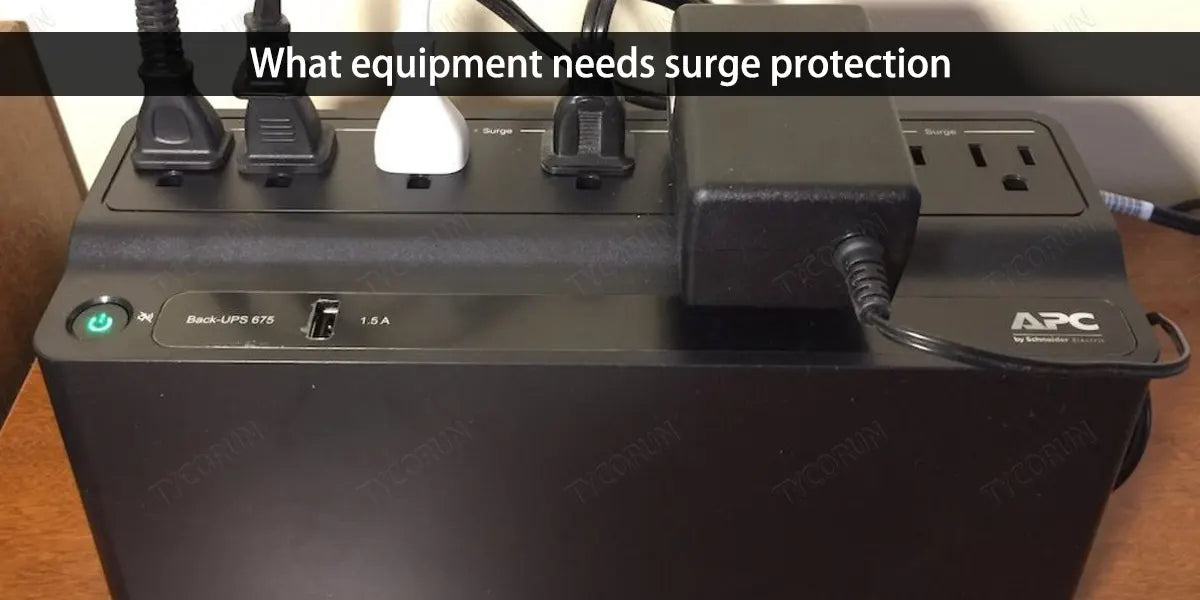
● Surge protector environment
PCs and computer peripherals such as printers, monitors, and routers TVs, DVRs, cable boxes, satellite receivers, sound systems, and other home theater components. Lighting, tools, small appliances and office equipment
4. The role of UPS surge protector
Today, UPS surge protector can prevent the damage of overload current to electrical circuit boards, and is an indispensable safety protection device in circuit electrical systems and signal systems. It is an electronic device that consumes little or no electrical energy.
However, it is able to balance the voltage in the event of transient high-voltage spikes on the main application appliance, where they form a fast short-circuit loop to protect the electrical equipment on the main AC power source. If it is used for the rv electrical system, it is a good choice.
5. How UPS surge protector enables fast power switching
Of course, UPS is also not just an emergency power supply, but also a UPS surge protector that protects connected devices from power issues such as surges or abnormal voltages.
These issues can damage electronic devices and devices, shorten their life span, or affect their performance. When there is a large voltage fluctuation in the power supply, a huge surge due to lightning and other reasons, etc., it is likely to cause the problem of equipment burnout.
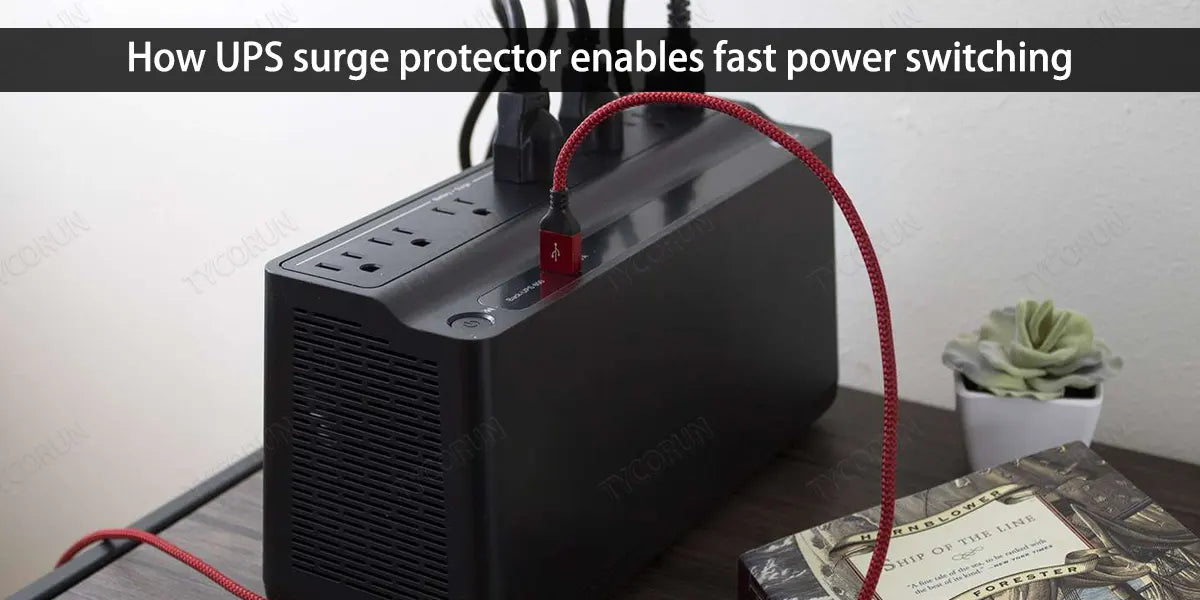
If the equipment is connected to UPS power supply, then when these abnormal power supply conditions occur, UPS surge protector will also start immediately (backup type), or even always in the starting state (online), to provide the purest power supply to the equipment to prevent failure. The battery is the heart of a UPS power supply (but can also be a major source of UPS failure).
UPS rectifiers have two important roles: converting input mains power from AC to DC and charging the battery when DC enters the inverter. The inverter then converts direct current from the rectifier (or battery) back to alternating current for use by the load. Static bypass switches allow mains AC power to flow directly through the UPS to the load consumer, bypassing UPS components and providing critical protection in the event of UPS failure.
6. What are the types of UPS surge protector
● Principle of operation
- Standby
A backup UPS system provides only the most basic functionality, which is UPS surge protector and battery backup power. Therefore, the quality of its power supply is not good enough, and the cost is much lower. It can only be used for devices rated less than 2 kVA, suitable for powering devices that are not sensitive to voltage changes, such as personal computers.
- Line-interactive
Line interactive uninterruptible power supply with technology that corrects minor power fluctuations (undervoltage and overvoltage) without switching to the lithium battery. The UPS surge protector provides power in the event of a power outage, voltage dip, voltage surge or overvoltage with a wider range of protection than the backup type. However, when switching to battery power, a conversion time of less than 10 milliseconds is still required.
- Online or double conversion
Dual converter (in-line) UPSs provide stable, clean, near-perfect power regardless of input power conditions. This UPS converts the incoming alternating current to direct current, and since there is no need to switch to DC power. As a result, UPS surge protector switches the battery to zero conversion time and is virtually resistant to all types of power supply faults. Of course, the online type is also the most expensive because it adds a large number of two parts of the circuit.
● Output power waveform
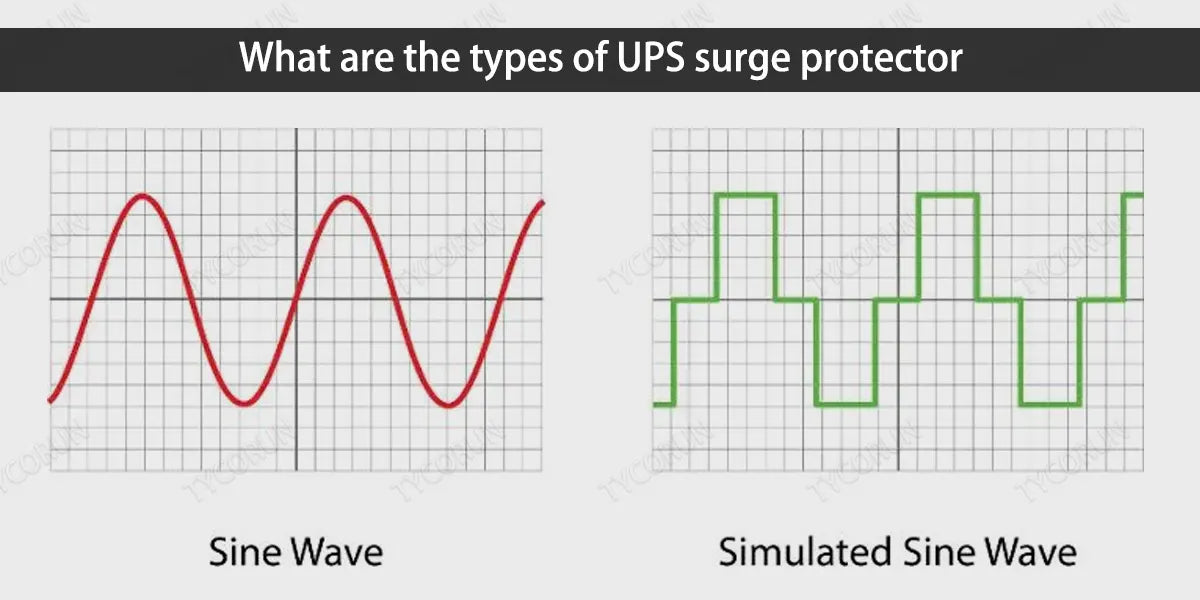
- Pure sine wave UPS surge protector
The highest quality waveform output for electricity is a sine wave, which is a smooth, repetitive alternating current. The sine wave output ensures that devices using active PFC power do not shut down when switching from mains to battery power, so it is mainly used in in-line UPS.
- Simulated sine wave UPS surge protector
Analog sine waves, so-called square waves, use pulse wave modulation to produce stepwise approximate sine waves, providing a more cost-effective battery backup power for devices that do not require a sine wave output. Low cost and common in backup and line interactive UPS systems (they typically use sine wave utility power in the non-switching state and square wave in the battery state).
You will find that the analog sine wave output has a power gap for each frequency period. Sometimes, this power gap can cause damage to the power supply of sensitive electronic equipment.
7. What to look for when buying a UPS surge protector
First of all, decide on the type of UPS surge protector you choose based on your device type and the power supply problem you are facing. In terms of power supply problems, the backup UPS can cope with three types: power failure, surge, and constant voltage drop.
The online interactive UPS can also cope with voltage sags and voltage swells. If your appliances are still sensitive to power supply signals, such as precision instruments and HIFI audio equipment, then you need to choose the online type (double conversion type) to cope with additional line noise, frequency changes and harmonic distortion.
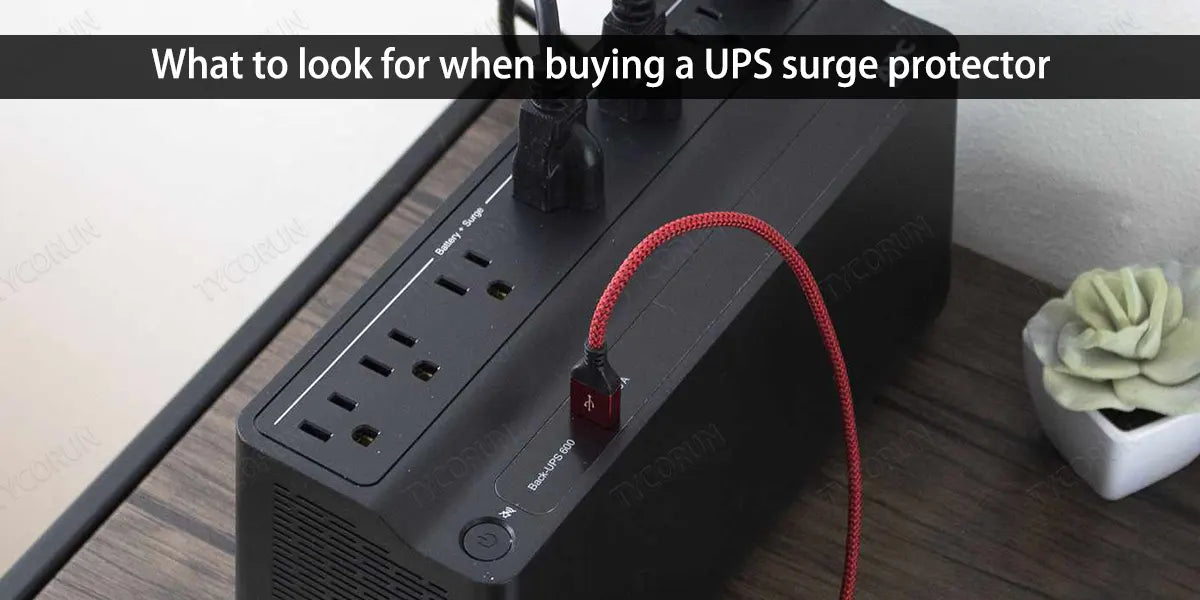
The next thing to consider is how much total power you need for the UPS surge protector. The greater the power capacity, the more electronics and devices can be supported. To determine the UPS power capacity, the total load power needs to be calculated, which is the sum of the power used by the devices connected to the UPS. The simplest way, if you are a computer or NAS, can use the rated power of the distributed power supply as load power.
However, don't forget the power of your temporary peripherals that need to be powered independently. The backup UPS generally uses wattage power, while the online interactive and online type like to be represented by VA (volt-ampere), which is actually W.
Finally, add a 20% redundancy factor to the total load, which is the number of UPS power you need. And the battery is also an important issue that must be considered. Try to buy a UPS that can replace the battery module yourself. Lithium-ion batteries have a longer lifespan but are more expensive.
There is noise, heat dissipation and performance monitoring management. The former is very important for benchtop and compact machine users because they are on the same working surface as UPS. Preferably a UPS with a silent start-stop function.
8. Conclusion
Overall, UPS surge protector is critical to the safety of our electrical equipment. With these devices, damage caused by voltage surges can be prevented. UPS surge protector, on the other hand, protects against voltage spikes in appliances. A voltage surge is when an appliance or power cord exceeds its rated voltage. This can lead to damage to your electronic devices.
Related articles: UPS vs inverter, Top 10 lithium battery companies in the world, voltage vs current